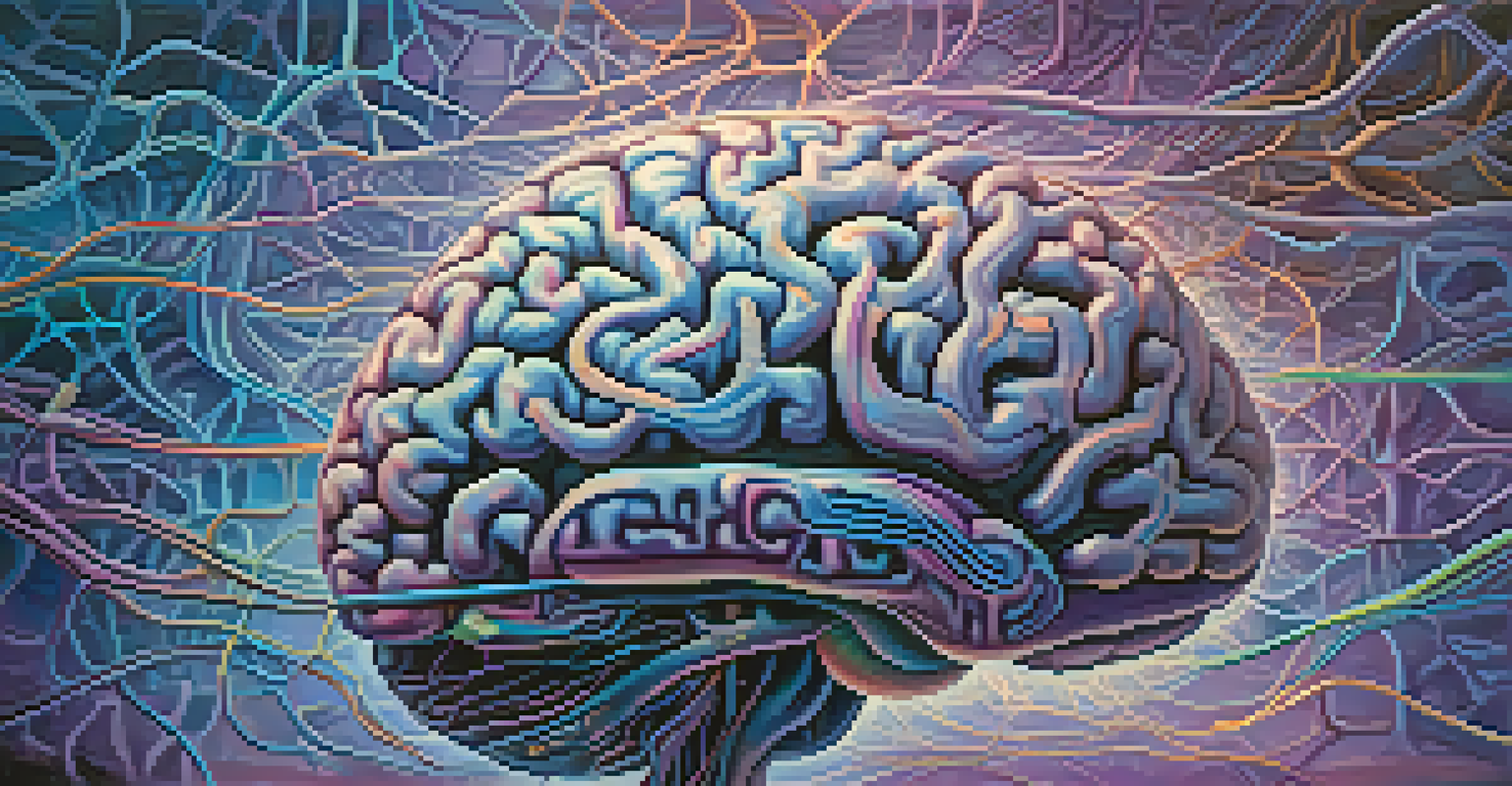The Science Behind Microdosing: What Research Reveals

What is Microdosing? A Simple Introduction
Microdosing refers to the practice of consuming very small amounts of psychedelic substances, often about one-tenth of a typical dose. This approach aims to provide therapeutic benefits without the intense effects associated with full doses. Essentially, it’s about finding a sweet spot where you can enjoy the potential perks without going on a trip.
The mind is everything. What you think you become.
While commonly associated with substances like LSD or psilocybin (the active ingredient in magic mushrooms), microdosing can also involve other psychedelics. People often report experiencing increased creativity, enhanced focus, and improved emotional well-being. It’s important to note that the practice is still under scrutiny and should be approached cautiously.
The growing interest in microdosing has sparked numerous studies, seeking to understand its effects and potential applications. As research unfolds, we are beginning to uncover the intricate relationship between these substances and our brain's chemistry.
Historical Context: Microdosing Through the Ages
Microdosing isn’t a new phenomenon; it has roots in various cultures and traditional practices. Indigenous peoples have used psychedelics for spiritual and healing purposes for centuries, often in controlled settings. This historical context provides a fascinating backdrop to the modern microdosing trend, showing that humans have long sought ways to enhance their consciousness.

In the 20th century, figures like psychologist Timothy Leary helped bring psychedelics into the mainstream, sparking both interest and controversy. Although the focus then was often on full doses, the seeds for microdosing were planted. Today, as we revisit these substances with a scientific lens, the practice is gaining renewed attention and acceptance.
Microdosing: A Subtle Approach
Microdosing involves taking small amounts of psychedelics to potentially enhance creativity and emotional well-being without the intense effects of full doses.
Understanding this historical perspective helps frame current research and social attitudes towards microdosing. It shows that while the science is new, the human fascination with these substances is deeply rooted in our quest for knowledge and well-being.
Current Research: What Studies Are Saying
Recent studies on microdosing are starting to shed light on its potential benefits and risks. Some research indicates that microdosing may help alleviate symptoms of anxiety and depression, offering a promising avenue for mental health treatment. However, the results are still preliminary, and more rigorous studies are needed to draw definitive conclusions.
Psychedelics seem to be a key to unlock the door of perception, allowing us to see the world in new ways.
For instance, a study published in 2021 found that participants experienced improved mood and focus when microdosing with psychedelics. Yet, the research also highlighted the importance of individual differences, emphasizing that not everyone may experience the same effects. This variability suggests that personal factors play a significant role in how microdosing impacts each person.
As scientists continue to explore this area, they’re using advanced imaging techniques to understand how microdoses affect brain activity. This research is crucial for unlocking the mysteries of microdosing and determining its viability as a therapeutic option.
Psychological Effects: How Microdosing Influences the Mind
One of the most intriguing aspects of microdosing is its reported psychological effects. Many users claim that just a tiny amount can lead to heightened creativity, better emotional regulation, and an overall sense of well-being. It’s almost like giving your brain a gentle nudge to explore new pathways and ideas.
Researchers have noted that microdosing may alter neural circuits associated with mood and cognition. This could potentially explain the positive effects on creativity and focus. However, it’s essential to approach these claims with caution, as the subjective nature of these experiences can vary widely from person to person.
Historical Roots of Microdosing
The practice of microdosing has deep historical roots, with indigenous cultures using psychedelics for spiritual and healing purposes long before modern research emerged.
Additionally, some studies suggest that microdosing could help with mindfulness and self-reflection. Users often report feeling more connected to their thoughts and surroundings, which can enhance personal insights. Yet, further research is needed to clarify these effects and to understand the underlying mechanisms at play.
Potential Risks: What to Consider Before Microdosing
While microdosing can have appealing effects, it’s not without its risks. One concern is the potential for psychological side effects, especially for individuals with a history of mental health issues. Even at low doses, psychedelics can provoke anxiety or paranoia in some users, making it essential to proceed with caution.
Moreover, the legal status of many psychedelics varies by region, which can complicate access and safety. Users may inadvertently expose themselves to unsafe or unregulated substances. This highlights the importance of obtaining information from reliable sources and considering the legal implications before experimenting.
Ultimately, anyone considering microdosing should weigh the potential benefits against the risks. Consulting with a healthcare professional is advisable to ensure a safe approach, especially if other mental health treatments are being utilized.
Personal Experiences: Anecdotes from Microdosers
Personal stories from individuals who have tried microdosing can offer valuable insights. Many users share transformative experiences, noting increased creativity or improved mood. For instance, an artist might find that microdosing helps them break through creative blocks, leading to a burst of inspiration.
However, it’s essential to recognize that these anecdotes are subjective and can vary significantly. What works well for one person might not have the same effect on another. This variability reflects the complex interplay between individual biology and the substances used.
Research on Benefits and Risks
Current studies suggest microdosing may alleviate symptoms of anxiety and depression, but further research is necessary to fully understand its effects and potential risks.
These personal accounts often highlight the need for a community where users can share their experiences and learn from one another. As more people engage with microdosing, the conversation around its benefits and challenges continues to evolve, adding depth to our understanding.
The Future of Microdosing Research and Its Implications
Looking ahead, the future of microdosing research holds exciting possibilities. As societal attitudes toward psychedelics shift, more studies are being conducted, potentially leading to breakthroughs in mental health treatment. The ongoing research may pave the way for new therapeutic applications that could help individuals struggling with various psychological issues.
Moreover, as scientists delve deeper into how microdosing affects the brain, we may uncover more about its long-term effects. Understanding both the benefits and risks will be crucial in shaping guidelines for safe practices. This knowledge could also influence public policy regarding the use of psychedelics.

Ultimately, the future of microdosing could redefine our approach to mental wellness. By combining scientific inquiry with personal experiences, we stand on the brink of a new era in how we understand and treat mental health challenges.